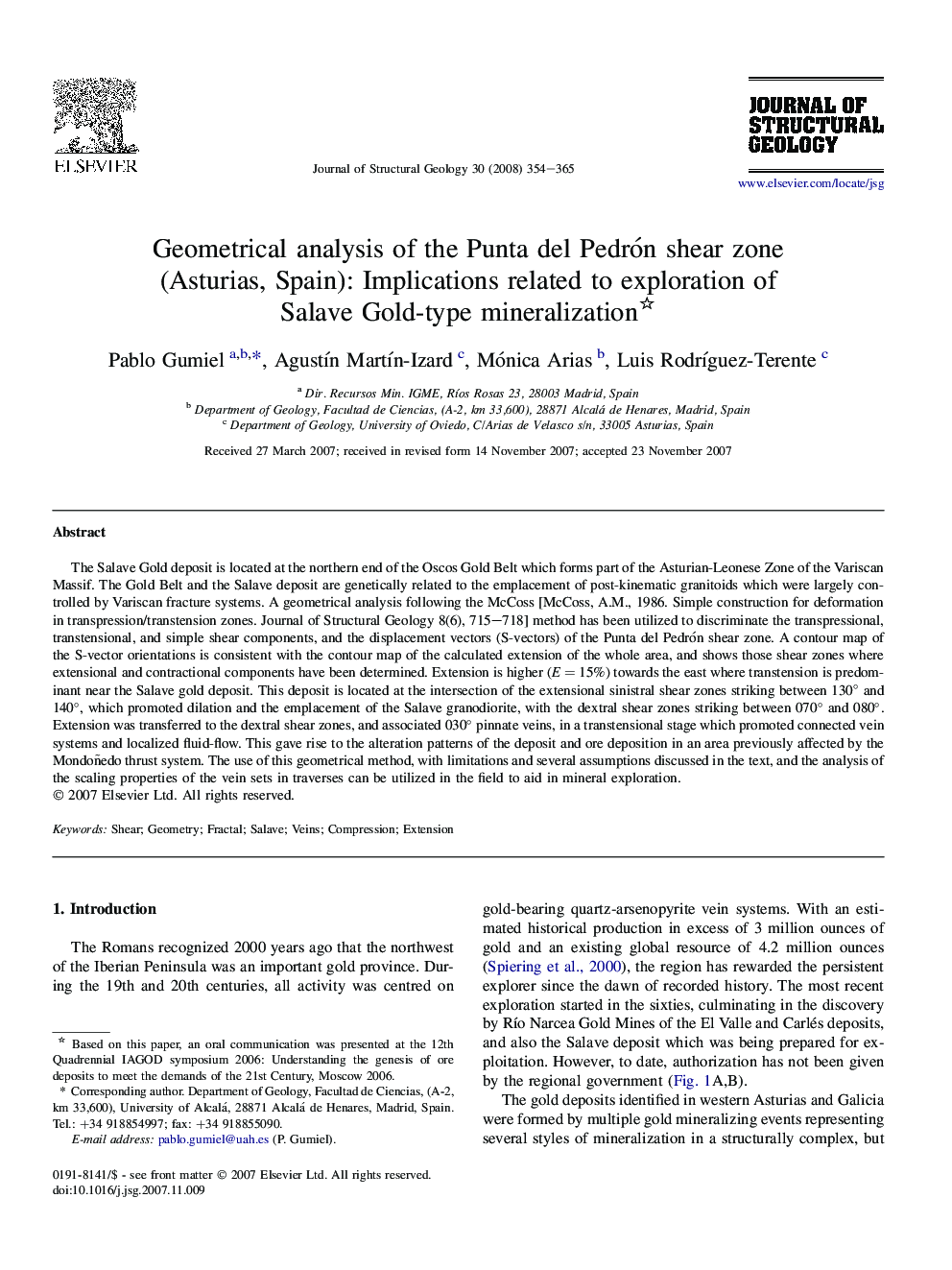| Article ID | Journal | Published Year | Pages | File Type |
|---|---|---|---|---|
| 4734367 | Journal of Structural Geology | 2008 | 12 Pages |
The Salave Gold deposit is located at the northern end of the Oscos Gold Belt which forms part of the Asturian-Leonese Zone of the Variscan Massif. The Gold Belt and the Salave deposit are genetically related to the emplacement of post-kinematic granitoids which were largely controlled by Variscan fracture systems. A geometrical analysis following the McCoss [McCoss, A.M., 1986. Simple construction for deformation in transpression/transtension zones. Journal of Structural Geology 8(6), 715–718] method has been utilized to discriminate the transpressional, transtensional, and simple shear components, and the displacement vectors (S-vectors) of the Punta del Pedrón shear zone. A contour map of the S-vector orientations is consistent with the contour map of the calculated extension of the whole area, and shows those shear zones where extensional and contractional components have been determined. Extension is higher (E = 15%) towards the east where transtension is predominant near the Salave gold deposit. This deposit is located at the intersection of the extensional sinistral shear zones striking between 130° and 140°, which promoted dilation and the emplacement of the Salave granodiorite, with the dextral shear zones striking between 070° and 080°. Extension was transferred to the dextral shear zones, and associated 030° pinnate veins, in a transtensional stage which promoted connected vein systems and localized fluid-flow. This gave rise to the alteration patterns of the deposit and ore deposition in an area previously affected by the Mondoñedo thrust system. The use of this geometrical method, with limitations and several assumptions discussed in the text, and the analysis of the scaling properties of the vein sets in traverses can be utilized in the field to aid in mineral exploration.
